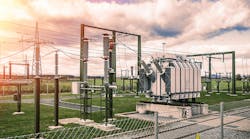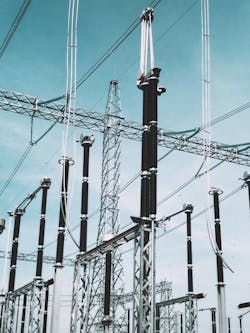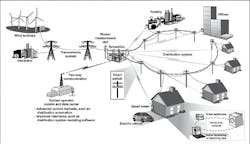Smart Transformers Will Play a Major Role in the Smart Grid
It’s rather evident that collectively, the energy industry must make some optimizations to the conventional power grid. There are many questions and concerns—both ethical and security-focused—about implementing smart and IoT-related technologies. Implementing a smart grid with online components will mean opening up the network to potential cyberattacks. That said, the risk may be worth it to see the electrical grid and its related systems brought into the modern age.
The particulars are still being worked out, at least on a grand scale. No one knows how IoT and online or connected systems will be introduced to the power grid, and it may look totally different than we’re all expecting. One thing is certain: Smart functionality is coming to the power industry. It may happen a lot sooner than projected, too.
Various teams—including industry professionals and researchers alike—are already working on smart transformers. As you may know, transformers regulate voltage and help power systems maintain contact with the energy grid. They provide the exact amount of power needed for nearby systems. Smart transformers would do precisely the same, except they’d be synced up via the internet to offer more nuanced controls, automation support, and remote access.
They will likely change the face of the modern power grid, even improving access and energy usage for local businesses and residents.
What Would Make a Transformer Smart?
Transformers come in all shapes and sizes and have just as many applications—all energy-based, of course. Mainly, they exist to regulate power from the grid and transfer electrical currents from one circuit to another (see figure).
Just as there are different types, various materials are used while building transformers, including everything from highly conductive copper to aluminum and beyond. Some materials are better suited for energy applications, but again, you’ll find that all transformers do the same thing regardless of composition.
By definition, a regular transformer is relatively dumb. It handles tasks automatically and is designed to respond to and pass on electrical currents natively. However, they have no connection to the digital world, like so many devices and solutions available today. Furthermore, many transformers currently in use weren’t meant to deal with modern applications.
Upgrading transformers to be smart would mean connecting them to the digital world, but it’s also about preparing them for today’s standards. For instance, the power grid as-is was never designed to accommodate hundreds—or even thousands—of electric vehicles. When they connect to the grid, they’re sapping electricity to charge expansive battery systems, which can ultimately put a lot of strain on the energy network.
Of course, that’s just one example. Renewable energy solutions, like home-based solar-energy systems, are also being connected to the primary power grid and altering how it operates.
Smart transformers are radically new devices that can be placed between the power grid and external systems, home or business-oriented, to provide a buffer. They are transformers like any other, but they also come equipped with advanced features and functionality to support the future power grid, including the eventual smart power grid.
As the entire power grid is enhanced to accommodate some of the more innovative solutions of today, power transformers will be a necessary element of it.
What are the Benefits of Smart Transformers?
In theory, the optimized nature of smart transformers will generate several benefits, not just for the energy industry, but consumers and businesses alike:
- Enhanced energy security: Thanks to the integration with a smart grid and better remote monitoring, these transformers are simpler and safer to check, as well as more reliable.
- Reduced pollution: Smart transformers are designed to make better use of electricity and direct it throughout the grid. That translates to a more effective consumption of power and reduced greenhouse gas emissions.
- Improved air quality: A more efficient grid means fewer fossil fuels burned for traditional power plants, and that also means lower emissions and better urban air quality.
- Better power services: When a transformer blows, power goes down and leaves many businesses and homeowners without power, sometimes for days at a time. Smart transformers can better direct electricity to prevent this, take over operations and compensate for failing components nearby. They also last longer, improving grid reliability.
- Remote access and controls: When a traditional transformer starts to fail, someone has to physically travel to its location to confirm its status and fix any issues. Smart transformers, on the other hand, include solutions to verify condition and information remotely, from either a central office or mobile command station. This support vastly improves operations and helps power companies better manage networks.
- New opportunities: Because smart transformers are developed with modern applications in mind, it means many will employ new materials, design techniques, and internal technologies never seen before. That translates to many new opportunities, some of which will not be known until smart transformers are live.
When Will Smart Transformers Be Available?
The evolution of the traditional transformer is underway. Researchers, engineers, and industry-proponents—including power companies—are all currently working on new and improved transformers. Much of this has to do with the current state of the industry, as improvements are sorely needed.
If all goes well, we could be looking at the rollout of more advanced energy solutions, including smart transformers, over the next few years.
Megan R. Nichols is a STEM writer and blogger.


